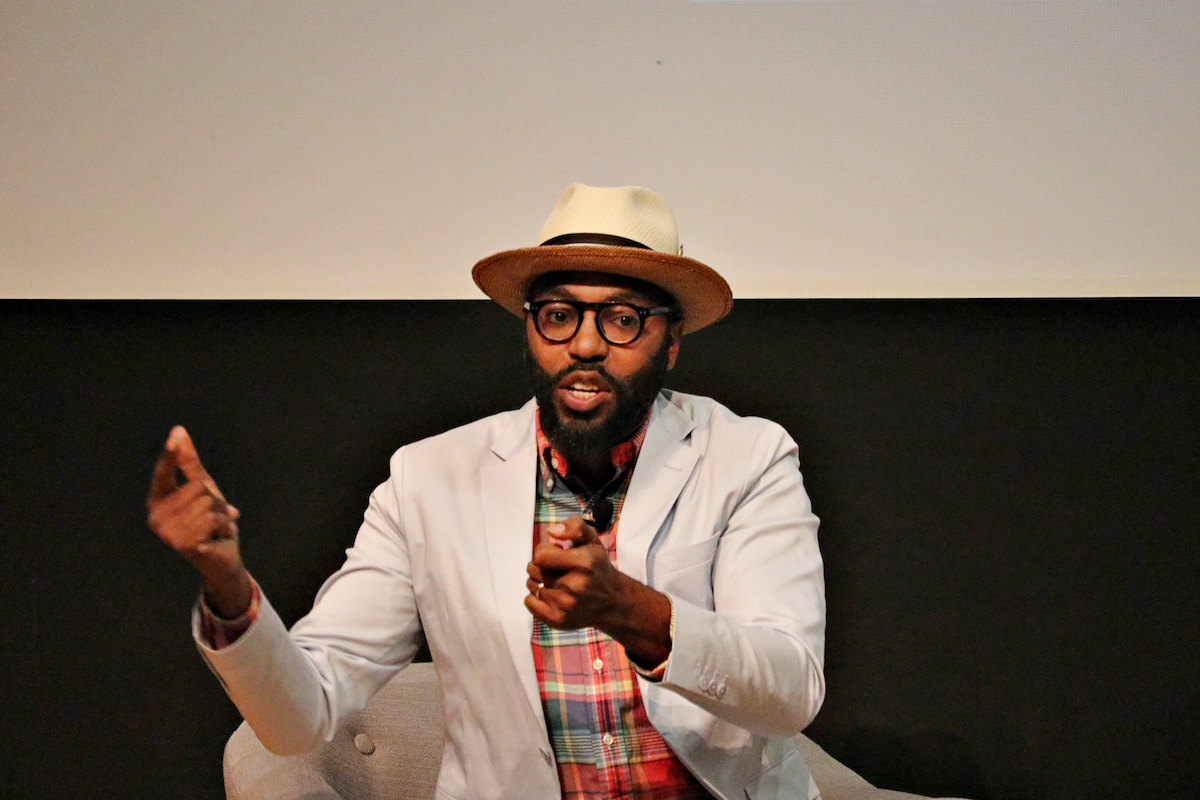As a leading exponent of hip hop pedagogy, TC Associate Professor of Science Education Christopher Emdin is known for being quick with words and ideas. So during a recent live radio interview on WNYC’s The Brian Lehrer Show, when Emdin’s connection started glitching, he turned the snafu into the perfect teachable moment about the interview’s topic: the issues that have accompanied remote teaching during the COVID pandemic.
While engineers scrambled to restore Emdin’s connection, substitute host Brigid Bergin smoothly continued explaining how Americans are growing increasingly frustrated by teaching delivered via computer and cell phone. Many worry that a generation of students is falling permanently behind or checking out of school entirely because of lack of access to the necessary technology.
Then Emdin was fully back live, and he and Bergin wryly observed that they were dealing, in the moment, with precisely the issue confronting so many students.
Still, the tenor of their conversation was far from defeatist. An experienced educator in both K-12 and higher education classrooms, Emdin believes that creative teachers can find ways to keep their students engaged and learning, with or without technology.
I come from the camp that says, we will never lose a generation of younger people. They will find ways to be able to connect when they can connect with each other and with educators; they will speed past the time that we’ve lost. We have to operate with some optimism of the infinite potential of young folks to find their way.
—Christopher Emdin, Associate Professor of Science Education
“I come from the camp that says, we will never lose a generation of younger people,” he said. “They will find ways to be able to connect when they can connect with each other and with educators; they will speed past the time that we’ve lost. We have to operate with some optimism of the infinite potential of young folks to find their way.”
One way to realize that vision, Emdin said, is to go back to old-fashioned methods of communication — for example, through the U.S. Postal Service. “I’ve seen such magical dialogue between teachers and students or students with each other in regular mail. The anticipation, thoughtfulness and reflectiveness. Technology is beautiful, but it will fail us, like during this call. But there are age-old practices of emotional connection that are just as valuable, that help us to develop skill sets that are lost in technology.”
I firmly believe in the depths of my soul that all of this is here to say, ‘We certainly cannot replace in-person teaching.’ There is something in that physical space that just can’t be touched.
—Christopher Emdin, Associate Professor of Science Education
Technology has great strengths, Emdin acknowledged. He cited the “flipped classroom” model, through which teachers record lessons or lectures that students can listen to or watch whenever and however often they wish. Class time is then used for questions, probing deeper into the material, and working on joint projects.
“Young folks who don’t do well with a traditional school schedule have a lot more agency” if they can study on their own schedule, Emdin said. “For a lot of young people that traditional school does not work well for, they’re having their best experience ever.”
Still, with or without technology, Emdin believes that good education can only happen with emotional connections forged in face-to-face contact in a shared physical space.
“I firmly believe in the depths of my soul that all of this is here to say, ‘We certainly cannot replace in-person teaching.’ There is something in that physical space that just can’t be touched.”
[Read a story about Emdin’s call The Atlantic for “reality pedagogy.”]
